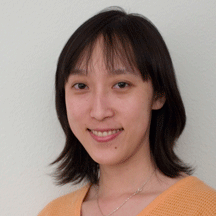Alumni > Alumni Profiles
Xiao Li
Detecting Search Intent of Internet Users
 Searching for information on the Internet can be frustrating. Sometimes users will know what they’re looking for, but can’t figure out the exact word combinations to return the right results. Other times users will query specific keywords expecting to find certain information, but end up with results that only contain those keywords in it. But what if a search engine could identify the task a user is trying to accomplish such as “buy a gift my wife would like” and provide relevant results pertaining to that task?
Searching for information on the Internet can be frustrating. Sometimes users will know what they’re looking for, but can’t figure out the exact word combinations to return the right results. Other times users will query specific keywords expecting to find certain information, but end up with results that only contain those keywords in it. But what if a search engine could identify the task a user is trying to accomplish such as “buy a gift my wife would like” and provide relevant results pertaining to that task?
Alumnus Xiao Li has been paving the way for next-generation search engines by detecting and understanding a user’s intent with a search query. For this work, Li has been honored with Technology Review’s TR35 Award.
Every year, MIT’s Technology Review selects 35 innovators under the age of 35 across the globe who are opening up new possibilities in technology—Li has landed on this list of elite 35. “I’m extremely proud of Xiao and all of her accomplishments,” says Professor Jeff Bilmes, Li’s faculty advisor. “It is especially rewarding to see former University of Washington, EE students making such an impact on the way we use technology.”
Li’s research interest in this field began as a graduate student working with Professor Jeff Bilmes on the “Vocal Joystick,” a voice-based computer interface for individuals with motor impairments. The Vocal Joystick differs from conventional speech recognition systems because it exploits continuous aspects of the human voice, as though one is singing to a computer. The system maps such signals to trajectories in a high-dimensional space, which are then used to control mouse pointers, robotic arms, or other electro-mechanical devices. The group performed many user studies on completing certain tasks while using the Vocal Joystick, such as drawing a circle on a computer screen, playing computer games, and operating a robotic arm to pick up objects.
“We found that users are sometimes frustrated because they were either novice users, or they didn't know how to optimally control their voice to achieve their goals,” says Li. “So we asked ourselves—can we build a system that better understands a user’s intent based on the data collected in our user studies?” This is how Li began using machine learning techniques on user intent.
After receiving her PhD in 2007, Li joined the Speech Research Group at Microsoft. Li’s research has produced key models and algorithms that are used in several specialized services of Microsoft’s search engine, Bing. She built machine learning models that leverage a large amount of a user’s search activities in the past, and generalize patterns to predict a user’s intents in future queries. More importantly, Li’s approach to intent understanding requires minimum human effort in the loop, which makes the development process more scalable.
Li says her research philosophy is simple: observe and generalize. “I observe how users interact with a search engine, and what web documents they clicked on after issuing their queries. By analyzing such information at a large scale, we can learn a great deal about user intent.”
For example, consider the query, "best Italian restaurant near downtown waterfront." The technology Li developed would not only understand that the intent of this query is to "find restaurant," but it also extracts the meanings of individual terms, such as "best," which refers to rating, "Italian," which refers to cuisine type, and "downtown waterfront," which refers to location. With such information, a search engine would be able to route the query to a specialized search module (in this case restaurant search) and return the most relevant and essential answers instead documents that merely contain all these keywords.
Li attributes much of her career success to the people she worked with during her days as a graduate student. “I am enormously grateful to my advisor Jeff Bilmes and many other EE faculties for teaching me everything I know about research, and for empowering me with the necessary skill set,” says Li.
After working at Microsoft Research for over four years, Li recently embarked on a new adventure at Facebook Inc. as a research scientist.





